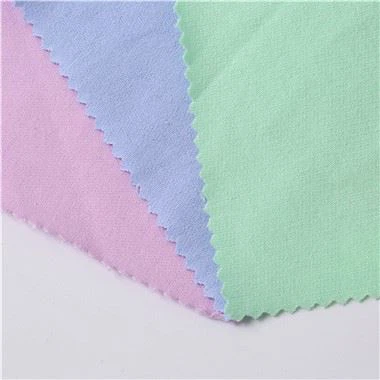Is the non-woven fabric waterproof?
Feb 27, 2025
Is non-woven fabric waterproof? Although it is everywhere in daily life, such as shopping bags, masks and mulching films, its waterproof properties are not as simple as they seem, but involve complex material science principles.
Non-woven fabric is essentially a sheet made of synthetic fibers such as polypropylene and polyester, bonded by heat-sealing, needle-punching, or water-jetting processes. Just as ordinary cotton cloth becomes wet when soaked, there are a large number of pores between the fibers of virgin non-woven fabric, and water molecules can easily penetrate. A comparative test conducted in a laboratory in Guangzhou last year showed that the permeability of untreated non-woven fabric reached 100% within 10 seconds after contact with water droplets. This explains why the protective performance of ordinary non-woven masks drops sharply after being exposed to rain, and also shows that virgin non-woven fabric does not have waterproof properties.
But technology can always break the rules. Nowadays, the non-woven products that claim to be waterproof on the market are actually processed in a special way. The most mainstream way is coating technology - covering a layer of waterproof film that is difficult to distinguish with the naked eye on the surface of the material. A Japanese enterprise has developed a new fluorine-based coating agent. After spraying, the non-woven fabric not only achieves IPX7-level waterproofing (immersed in water 1 meter deep for 30 minutes without water leakage), but also retains the original breathability of the material. This technological breakthrough has led to a surge in the application of waterproof non-woven fabric in outdoor tents, with the sales of related products increasing by 37% year-on-year in 2023.
More cutting-edge technology is hidden at the molecular level. The "nanoscale self-assembled waterproof process" recently announced by a new material company in Zhejiang makes each fiber repel water by allowing the waterproof agent to bond with the fiber molecular chain. The treated non-woven fabric of the medical protective suit can effectively prevent liquid penetration even if it is repeatedly wiped with alcohol 20 times. This technology is also applied in the latest surgical drapes, effectively reducing the risk of infection during surgery.
However, the improvement of waterproof performance often requires balancing other characteristics. For example, although the non-woven cloth with polyethylene coating has good waterproof performance, it will produce toxic gases when burned; some materials after chemical treatment will lose flexibility and are not suitable for making intimate clothing. Consumers need to read the product explaination when purchasing - truly high-quality waterproof non-woven cloth will mark the implementation standard (such as GB/T 4744-2013) and waterproof grade, rather than simply marking "waterproof".
Driven by the trend of environmental protection, biodegradable waterproof non-woven fabric has become a new track. This year, BASF, a German company, launched an ecological waterproof agent that uses plant-based raw materials to replace traditional petroleum derivatives, so that PLA non-woven fabric can degrade by more than 90% in a composting environment in 6 months. A baby diaper pad developed by a certain domestic mother and child brand took 15% of the market share in three months. This kind of innovation that combines function and environmental protection is changing the future of waterproof non-woven fabric.
From the operating room to the snow mountain camp, from the supermarket shelves to the construction site, the presence of waterproof non-woven fabric is becoming more and more strong. When we touch the slightly slippery surface of the non-woven fabric next time, we may have a better understanding: that seemingly simple fabric contains the precise control of material engineers over the microcosm, and also carries the dual pursuit of function and environmental protection in modern manufacturing.







